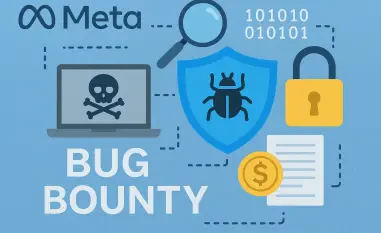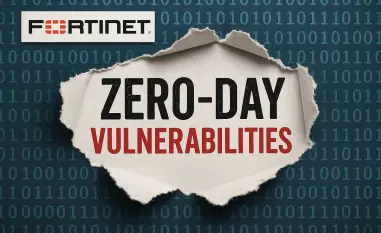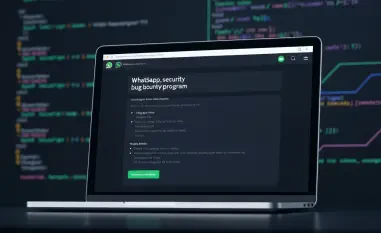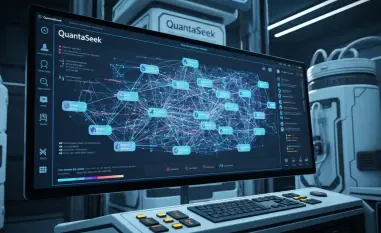I’m thrilled to sit down with Malik Haidar, a renowned cybersecurity expert with a wealth of experience in safeguarding multinational corporations from sophisticated threats and hackers. With a deep background in analytics, intelligence, and security, Malik has a unique ability to blend business perspectives with cutting-edge cybersecurity strategies. Today, we’re diving into the critical world of AI security, exploring vulnerabilities in AI-powered development tools like the recent Cursor AI Code Editor flaw, the broader risks of integrating AI into business workflows, and the emerging threats posed by large language models (LLMs). Our conversation will uncover the hidden dangers in these technologies and offer insights into protecting against them.
Can you walk us through the recent vulnerability in the Cursor AI Code Editor, known as CVE-2025-54136, and why it’s such a significant concern?
Absolutely. This vulnerability, dubbed MCPoison, is a high-severity flaw in Cursor, an AI-powered code editor, with a CVSS score of 7.2. It exploits a weakness in how Cursor handles Model Context Protocol (MCP) configurations, which are meant to standardize how large language models interact with external tools. The issue allows an attacker to achieve remote code execution by manipulating a trusted MCP configuration file, either in a shared GitHub repository or locally on a target’s machine. Once approved by a user, the configuration can be silently swapped with malicious code, like launching a backdoor, without any further prompts or warnings. It’s a big deal because it can lead to persistent access on a victim’s system, exposing organizations to severe risks.
How exactly does an attacker exploit this MCP configuration flaw in a shared repository setting?
The attack is quite sneaky. First, the attacker adds a seemingly harmless MCP configuration file to a shared repository, often under a folder like “.cursor/rules/mcp.json.” They wait for the victim—a collaborator or developer—to pull the code and approve the configuration in Cursor. Once that approval happens, the attacker replaces the benign file with a malicious payload, such as a script to run unauthorized commands. Since Cursor trusts the configuration indefinitely after the initial approval, the malicious code executes every time the victim opens the editor, with no additional alerts. It’s a classic bait-and-switch that preys on trust.
What makes Cursor’s trust model particularly risky in this scenario?
The core problem lies in Cursor’s assumption that once an MCP configuration is approved, it remains trustworthy forever, even if it’s modified later. This “approve once, trust always” approach creates a blind spot. Attackers can exploit this by altering the configuration post-approval without triggering any re-evaluation or user notification. It’s a fundamental flaw in the trust model of AI-assisted development tools, where automation and convenience can sometimes override security, leaving systems vulnerable to persistent threats.
What are the potential consequences of this vulnerability for organizations, especially in terms of broader risks?
The impact can be devastating. Beyond just compromising an individual developer’s machine, this flaw opens the door to supply chain attacks, where malicious code can propagate through shared repositories and affect entire teams or partner organizations. It also poses a significant risk of data theft and intellectual property loss, as attackers can silently exfiltrate sensitive information. For businesses relying on AI tools like Cursor in their development pipelines, this kind of vulnerability can undermine trust in their processes and expose them to regulatory or financial fallout if breaches occur.
How has Cursor responded to this issue, and do you think their fix goes far enough?
Cursor addressed this in version 1.3, released in late July 2025, by requiring user approval for every modification to an MCP configuration file. It’s a step in the right direction, as it eliminates the “trust forever” problem and forces re-evaluation of changes. However, I believe it’s not a complete solution. User approval can still be bypassed through social engineering, and it places a burden on users to stay vigilant. Additional measures, like cryptographic signing of configurations or sandboxing untrusted code, could provide stronger protection and reduce reliance on human judgment.
Shifting gears to broader AI security challenges, what other vulnerabilities have been uncovered in AI development tools recently?
Beyond Cursor, recent reports from various security researchers have highlighted multiple weaknesses in AI tools. These include flaws that enable remote code execution by exploiting poorly secured integrations or bypassing denylist protections meant to block malicious inputs. Some tools have been found lacking in robust input validation, allowing attackers to inject harmful commands or scripts. These issues, often patched in updates like Cursor’s version 1.3, underscore a wider problem: as AI becomes more embedded in development environments, the attack surface expands, and traditional security controls often fall short against AI-specific threats.
With AI tools like LLMs becoming integral to business workflows, what emerging risks do you see in their use for code generation?
The integration of LLMs into workflows, especially for code generation, brings several risks. One major concern is the quality and security of the generated code—studies show that nearly half of the code from over 100 LLMs fails basic security tests, introducing vulnerabilities like those in the OWASP Top 10. There’s also the threat of AI supply chain attacks, where malicious models or poisoned data can compromise outputs. Other risks include prompt injection, where attackers manipulate inputs to produce harmful results, and data leakage, where sensitive information might be inadvertently exposed through model responses. It’s a complex landscape that demands new security paradigms.
Can you explain the concept of AI supply chain attacks and their potential impact on developers or organizations?
AI supply chain attacks target the ecosystem around AI tools, such as the models, training data, or platforms distributing them. For instance, an attacker might poison a model or embed malicious instructions in templates shared on public repositories. When developers or organizations use these compromised resources, they unwittingly introduce vulnerabilities into their systems, which can lead to unauthorized code execution or data breaches. The impact is amplified because AI tools are often trusted implicitly, and a single tainted component can affect countless downstream users, disrupting entire development pipelines or business operations.
What’s your forecast for the future of AI security in development environments over the next few years?
I believe AI security will become a top priority as these tools become even more pervasive. We’re likely to see a wave of new vulnerabilities as adoption outpaces security research, but I also expect stronger industry collaboration to develop standards and best practices. Innovations like secure model training, better input sanitization, and runtime protections will emerge to counter threats like prompt injection or model poisoning. However, attackers will adapt too, finding novel ways to exploit trust in AI systems. It’s going to be a cat-and-mouse game, and organizations will need to invest heavily in education and tools to stay ahead of the curve.













